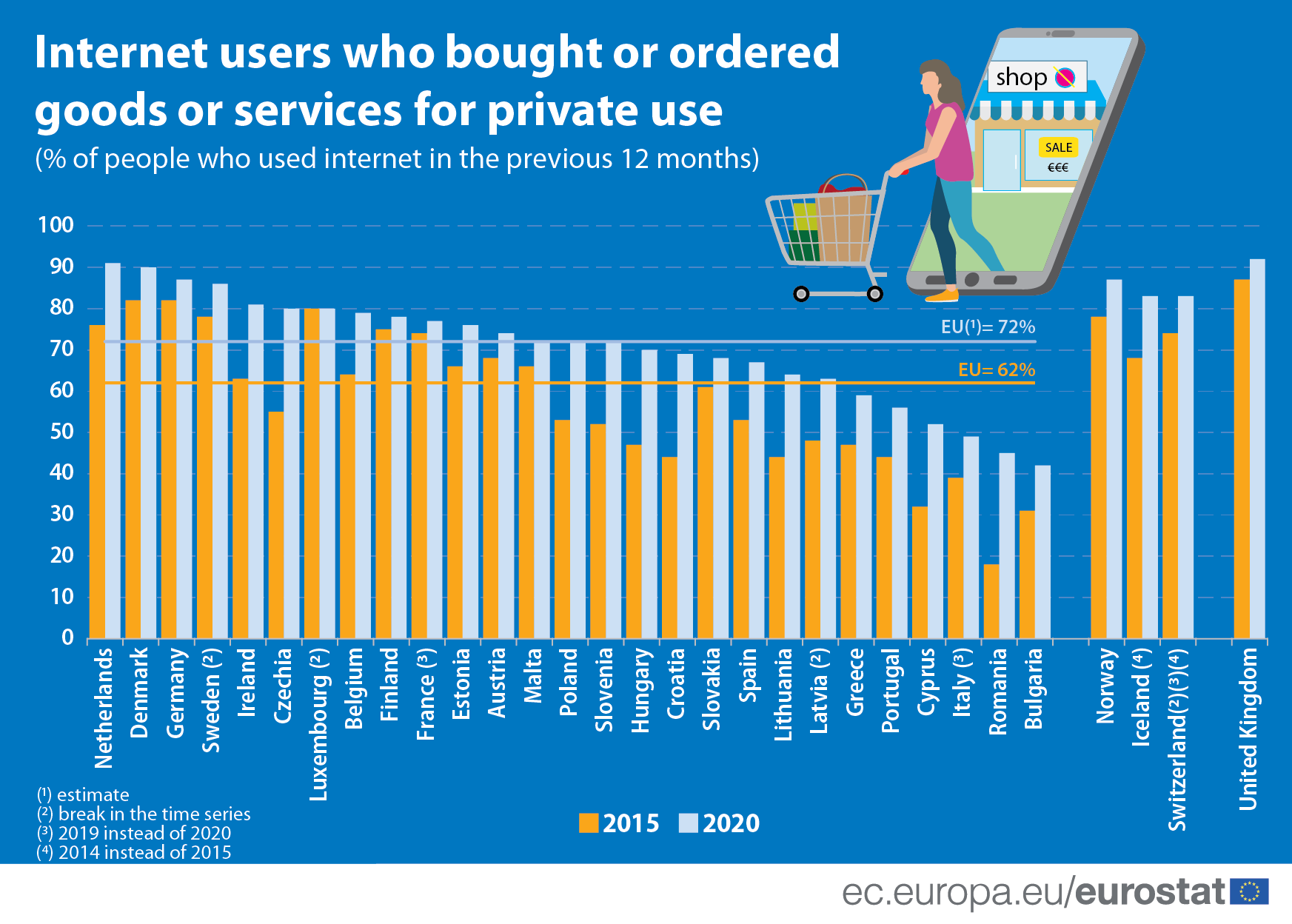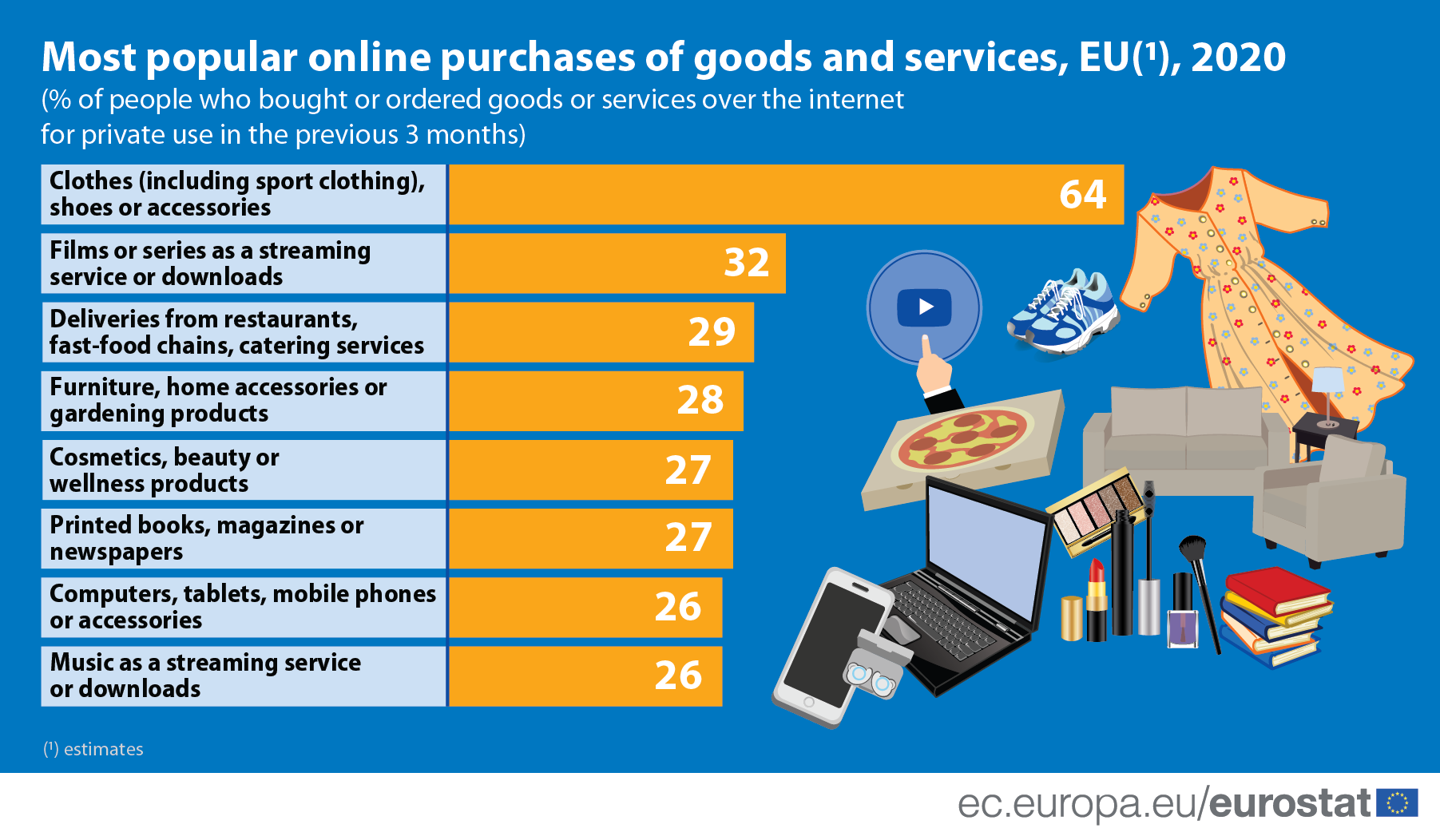
Online shopping is continuing to grow in the European Union. With high street shopping affected by the COVID-19 restrictions and changes in habits and preferences, e-commerce can be expected to grow further. Data realised by Eurostat reveals that over the last five years, the largest increases in online shopping among internet users were recorded in CEE countries.
In the 12 months prior to the 2020 survey, 89% of people aged 16 to 74 in the EU had used the internet, 72% of whom had bought or ordered goods or services for private use. Online shopping increased by 4 percentage points compared with 2019 (68% of internet users) and by 10 pps compared with 2015 (62%).
More than 8 in 10 internet users in most Northern European had bought or ordered goods or services over the internet in the 12 months prior to the survey. Among CEE countries, Czechia (80%) leads the way, followed by Poland and Slovenia (72%), Hungary (70%), Croatia (69%) and Slovakia (68%). On the lower hand of the scale, fewer than 50% had shopped online in Bulgaria (42%) and Romania (45%), the two EU countries with the lowest penetration rate.

Over the last five years, the largest increases in online shopping among internet users were recorded in Romania (+27 pps) Czechia and Croatia (both +25 pps) as well as Hungary (+23 pps).

In the 3 months prior to the survey, the most common online purchases were clothes (incl. sport clothing), shoes or accessories (ordered by 64% of online shoppers). Wearables were followed by films or series as a streaming service or downloads (32%), deliveries from restaurants, fast-food chains and catering services (29%), furniture, home accessories or gardening products (28%), cosmetics, beauty or wellness products (27%), printed books, magazines or newspapers (27%), computers, tablets, mobile phones or their accessories (26%) and music as a streaming service or downloads (26%).



